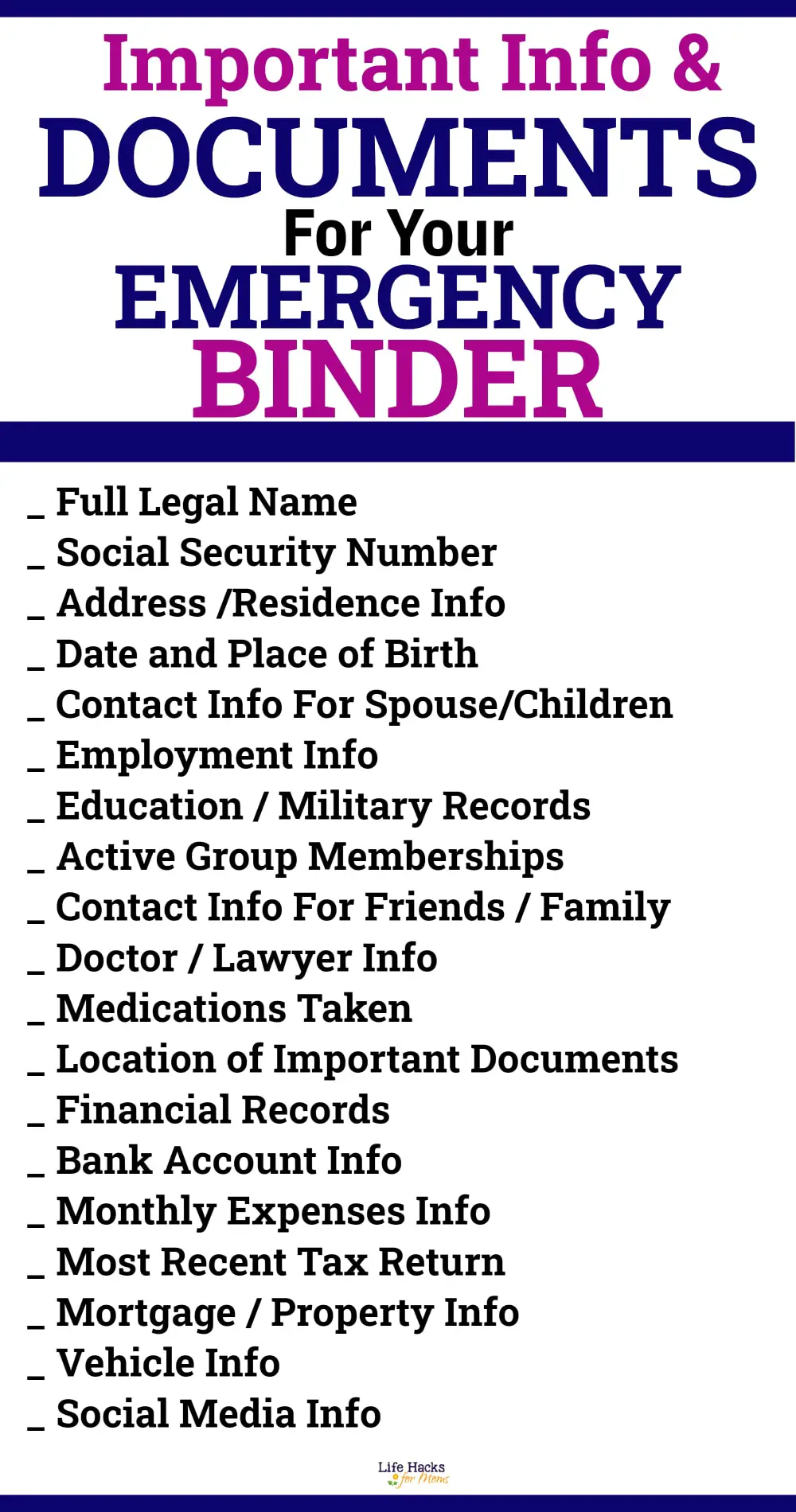Essential Paperwork for Emergency Contacts: A Guide

In the realm of emergency preparedness, having up-to-date paperwork for emergency contacts is not just a matter of convenience but of critical necessity. Whether it's a medical emergency, a natural disaster, or any other unforeseen situation, quick access to key contact information can be the difference between chaos and control. This guide will walk you through the essential documents and information you should prepare to ensure you or your loved ones can be contacted swiftly and efficiently during an emergency.
The Importance of Emergency Contacts

Emergency contacts serve as your lifeline when you cannot speak for yourself or if there’s a need to inform someone about your situation. Here are some reasons why organizing emergency contact information is vital:
- To provide peace of mind for yourself and others.
- To ensure medical personnel can contact someone in case of an accident or illness.
- To facilitate communication during natural disasters or crises.
- To allow for quick decision-making in situations where time is of the essence.
What Should Your Emergency Contact List Include?

Creating an effective emergency contact list involves more than just jotting down names and phone numbers. Here’s what you should include:
- Full Names: Including middle names can prevent confusion.
- Phone Numbers: Both mobile and landline if available.
- Email Addresses: Useful for less urgent matters or confirming information.
- Relationship: Spouse, parent, sibling, etc., to clarify their role.
- Work/School Information: Including address and contact numbers.
- Medical Professionals: Doctors, specialists, or personal physicians.
- Insurance Providers: Contact information for health, life, or disability insurance.
📝 Note: Keep the contact list brief and prioritize the most critical contacts to avoid overwhelming the recipient with too much information.
Creating an Emergency Contact Card

An emergency contact card is a simple, portable solution to carry this critical information. Here’s how to create one:
- Use a Wallet-Sized Card: Preferably laminated to protect against wear and tear.
- Include Essential Information: Just the most vital details like primary and secondary contacts, blood type, allergies, and medical conditions.
- Back-Up Information: A QR code leading to an online document can be useful for detailed information.
🔖 Note: Keep copies of the card in multiple locations, such as in your wallet, in your car’s glove compartment, and at home.
Utilizing Technology for Emergency Contacts

While traditional paper documents have their place, technology can enhance the accessibility of your emergency contacts:
- Smartphone Apps: Utilize apps like ICE (In Case of Emergency) which allows emergency responders to access your contacts directly from your locked phone.
- Cloud Storage: Upload your emergency contact information to cloud services like Google Drive or Dropbox with shared access to your contacts.
- Health Profiles: Use your smartphone’s health app to store medical information alongside emergency contacts. Apple Health, for instance, includes this feature.
Technological solutions offer immediate access to information, but remember that during an emergency, power outages or system failures can limit access.
Updating Your Emergency Contact Information

Keeping your emergency contacts up-to-date is as important as having them:
- Life Changes: Update contact details after marriage, divorce, or when children become adults.
- Changes in Employment or Address: Reflect these changes in your documents.
- Annual Review: Set a reminder to review and update your list annually or semi-annually.
🕗 Note: Regularly updating your emergency contact information ensures its accuracy during an emergency when time is critical.
Legal and Financial Information

Include legal and financial information that might be needed:
- Power of Attorney: Details of who can make decisions on your behalf.
- Insurance Policies: Copies of life, health, and disability insurance documents.
- Living Will or Advance Directives: Instructions regarding life-sustaining treatment.
Engaging Family and Friends in Emergency Planning

Encouraging others to prepare their emergency contact lists can be beneficial:
- Family Meetings: Use this opportunity to review emergency plans and contacts together.
- Digital Sharing: Share essential documents through secure online platforms with trusted individuals.
- Regular Updates: Encourage family members to inform you of any changes in their contact information.
In emergencies, having the right paperwork ready can streamline communication, ensuring that your loved ones or authorities know whom to contact and what steps to take. Your preparedness not only demonstrates foresight but also provides assurance that in moments of crisis, there's a system in place to support and protect those who matter most. Ensuring your emergency contact information is organized, accessible, and up-to-date is an investment in your safety and peace of mind.
Who should be on my emergency contact list?

+
Your emergency contact list should include immediate family members, close friends or neighbors, your primary healthcare provider, and possibly your legal or financial representatives.
How often should I update my emergency contacts?

+
It’s recommended to review and update your emergency contact list at least annually or whenever there are significant life changes like marriage, new employment, or a change in residence.
What additional information should I keep with my emergency contact list?

+
Alongside emergency contacts, include details like blood type, allergies, current medications, medical conditions, and any legal documents like living wills or power of attorney.
Is it safe to store my emergency contact list online?

+
Yes, storing your list online with secure cloud services can be safe, especially if access is restricted to trusted individuals. However, always maintain physical copies as well due to potential issues with digital access during emergencies.



